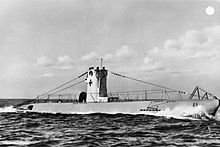German submarine U-333 was a Type VIIC U-boat of Nazi Germany's Kriegsmarine during World War II. The submarine was laid down on 11 March 1940 at the Nordseewerke yard at Emden, launched on 14 June 1941, and commissioned on 25 August 1941 under the command of Kapitänleutnant Peter-Erich Cremer. After training with the 5th U-boat Flotilla at Kiel, on 1 January 1942 U-333 was transferred to the 3rd U-boat Flotilla based at La Pallice for front-line service.
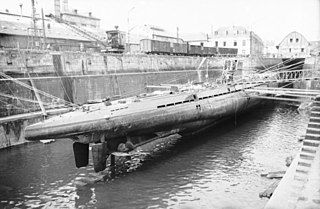
The German submarine U-41 was a Type IXA U-boat of Nazi Germany's Kriegsmarine that operated during World War II. She conducted three war patrols during her short career, two as part of the 6th U-boat Flotilla and one as part of the 2nd flotilla. U-41 also sank five enemy vessels for a total of 22,815 gross register tons (GRT); captured two more for a total of 2,073 GRT and damaged one other of 8,096 GRT.

German submarine U-255 was a Type VIIC U-boat that served in Nazi Germany's Kriegsmarine during World War II. The submarine was laid down on 21 December 1940 at the Bremer Vulkan yard at Bremen-Vegesack, launched on 8 October 1941 and commissioned on 29 November 1941 under the command of Kapitänleutnant Reinhart Reche.

German submarine U-66 was a Type IXC U-boat of Nazi Germany's Kriegsmarine during World War II. The submarine was laid down on 20 March 1940 at the AG Weser yard at Bremen, launched on 10 October and commissioned on 2 January 1941 under the command of Kapitänleutnant Richard Zapp as part of the 2nd U-boat Flotilla.

German submarine U-9 was a Type IIB U-boat of Nazi Germany's Kriegsmarine. Her keel was laid down on 8 February 1935, by Germaniawerft in Kiel as yard number 543. She was launched on 30 July 1935 and commissioned on 21 August, with Korvettenkapitän Hans-Günther Looff in command.

German submarine U-515 was a Type IXC U-boat of Nazi Germany's Kriegsmarine built for service during World War II. She was commissioned in 1942 and sunk in 1944. U-515 completed six operational patrols and sank 23 ships, badly damaged two ships which later sank, and damaged two additional ships.
The Black Sea Campaigns were the operations of the Axis and Soviet naval forces in the Black Sea and its coastal regions during World War II between 1941 and 1944, including in support of the land forces.

German submarine U-101 was a Type VIIB U-boat of Nazi Germany's Kriegsmarine during World War II. She had a highly successful career.
German submarine U-177 was a Type IXD2 U-boat of Nazi Germany's Kriegsmarine during World War II. The submarine was laid down on 25 November 1940, at the DeSchiMAG AG Weser yard in Bremen, as yard number 1017. She was launched on 1 October 1941, and commissioned on 14 March 1942, under the command of Kapitänleutnant Wilhelm Schulze. After a period of training with the 4th U-boat Flotilla at Stettin, the boat was transferred to the 10th flotilla on 1 October 1942, and based at Lorient, for front-line service, she was then reassigned to the 12th flotilla at Bordeaux on 1 December.

German submarine U-203 was a German Type VIIC submarine U-boat built for Nazi Germany's Kriegsmarine for service during World War II.

The German Type IXA submarine was a sub-class of the German Type IX submarine built for Nazi Germany's Kriegsmarine between 1937 and 1938. These U-boats were designed between 1935 and 1936 and were intended to be fairly large ocean-going submarines. The inspiration for the Type IXA submarine came from the German Type IA submarine, which had a similar diving depth and identical submerged horsepower.

Submarine warfare in the Black Sea in World War II during 1941 primarily involved engagements between submarines of the Soviet Black Sea Fleet attacking Axis merchantmen defended by Romanian and Bulgarian warships. These engagements were a part of the naval Black Sea campaigns between Axis and Soviet naval forces.

The Soviet Navy launched the Soviet submarine Baltic Sea campaign in 1942 to harass the strategic iron-ore traffic from neutral Sweden to Nazi Germany during World War II. The Soviet Union and the German Reich fought each other on the Eastern Front (1941-1945) during the war. The Allies also launched other operations - especially involving the Royal Navy - against the traffic.

The Soviet submarine Baltic Sea campaign in 1943 was launched by the Soviet Navy to harass the strategic iron ore traffic from neutral Sweden to Nazi Germany on the Eastern Front during the WWII. Other operations were launched by Allies, especially by the Royal Navy. The offensive was a repetition of the previous campaign in 1942 but resulted in a failed outcome.
Submarine warfare in the Black Sea in World War II during 1942 involved engagements between primarily submarines of the Soviet Black Sea Fleet attacking Axis merchantmen defended by Romanian and German naval warships. These engagements were a part of the Black Sea campaigns between Axis and Soviet naval forces.

Submarine warfare in the Black Sea in World War II during 1943 involved engagements between submarines of the Soviet Black Sea Fleet attacking Axis merchantmen defended by Romanian and German naval warships, as well as and German U-boats attacking Soviet merchants on the eastern Black Sea. These engagements were a part of the Black Sea campaigns between Axis and Soviet naval forces.

The Soviet submarine Baltic Sea campaign in 1941 was launched by the Soviet Navy at the early stage of Operation Barbarossa. The offensive was hampered by the quick German ground advance and the retreat of Soviet naval vessels from the main Baltic harbors.
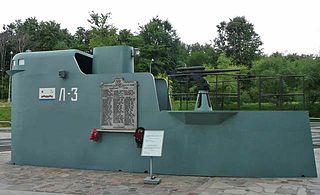
The Soviet submarine Baltic Sea campaign in 1944 was launched by the Soviet Navy to harass enemy shipping and naval military assets of the Nazi Germany on the Eastern Front during World War II.
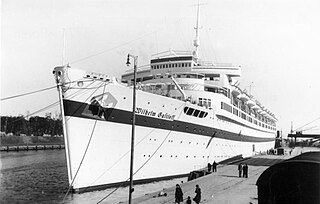
The Soviet naval Baltic Sea campaign in 1945 was launched by the Soviet Navy to harass enemy shipping and naval military assets of Nazi Germany on the Eastern Front during World War II. Both submarines and surface units of the Soviet Navy were employed. The campaign scored successes during Operation Hannibal.
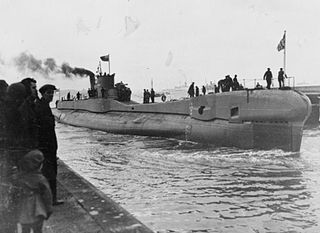
The Barents Sea campaign in 1941 was a submarine operation in the Arctic waters of the Barents Sea during World War II. It was a combined Soviet and British campaign, with boats departing from Polyarny to harass German shipping along the Norwegian coast.
